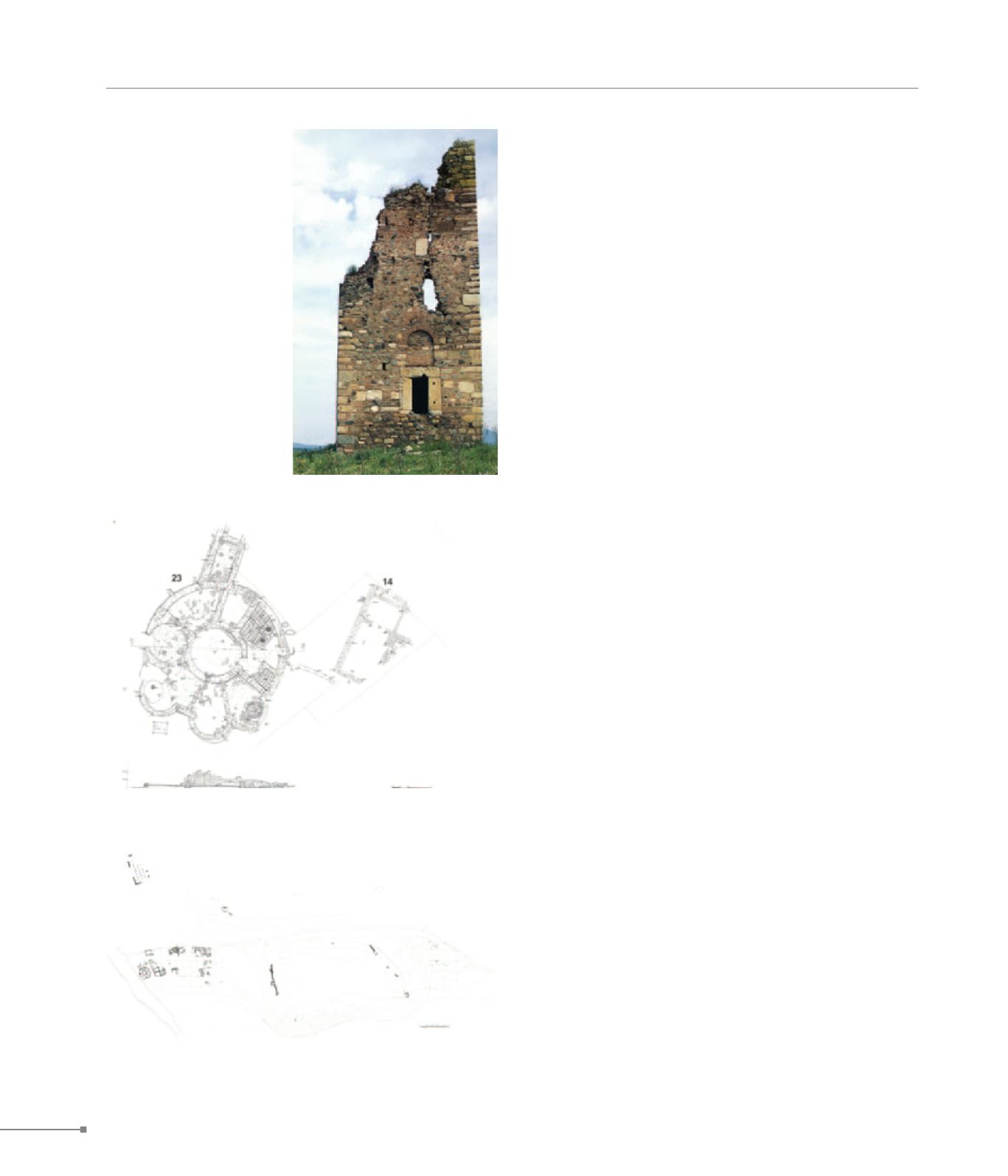
Mariana.
Nea Kallikrateia.
MACEDONIA
130
106. Nea Syllata, the fortress and the settlement, ground plan (Νέα
Σύλλατα, το κάστρο και ο οικισμός, κάτοψη)
106. Nea Syllata, workshop, ground plan (Νέα Σύλλατα, κτίσμα
εργαστηριακής χρήσης, κάτοψη)
104. Mariana, tower (Μαριανά,
πύργος)
104.
Mariana.
The Late Byzantine tower that is preserved at Mariana, Olyn-
thos, originally belonged to a metochion of the Docheiariou
monastery. At the same site remains of a church and of other
Byzantine construction have been detected.
105.
Galatista.
At the centre of the small town of Galatista, a tower of the
11th-12th c. is preserved, which was in use until the 14th c.
At Aghioi Anagryroi of Galatista an Early Christian basilica has
been discovered, above which a later small church was estab-
lished; a bath house has been excavated.
106.
Νea Syllata. Brya.
The refugee settlement of Nea Syllata occupies the site of the
medieval Brya (which succeeded ancient Brea). Brya flour-
ished during the Early Christian years, as attested by the two
cemeteries, workshops, and part of a bath house complex that
have been found. In the late 10th-early 11th c. the settlement
revived around Toumba, and around and within the ancient
citadel. In 1078, Brya became the episcopal see of Cassandria
and Brya. Outside the walls there was dense construction:
houses, many workshops, a bath house. Remains of an Early
Christian building with marble elements and a marble inlay
have been discovered in Toumba. The defensive walls feature
three construction phases, the first dating from the Late Ro-
man years. The most important was the second phase, of the
late 10th-early 11th c., as attested by the masonry. Minor in-
terventions and additions date from a subsequent third phase.
The fortress and the settlement were abandoned before the
late 13th c., after their destruction, and were not inhabited
again until the modern era.
107.
Nea Kallikrateia.
In the modern municipal district of Nea Kallikrateia, an Early
Christian settlement has been found, of which have been in-
vestigated a complex of wine presses, a bath house, a fur-
nace, and remains of a building with paintings and mosaics
on the walls. These finds, attesting to the existence of a pros-
perous community, date from between the 4th and the 6th c.


